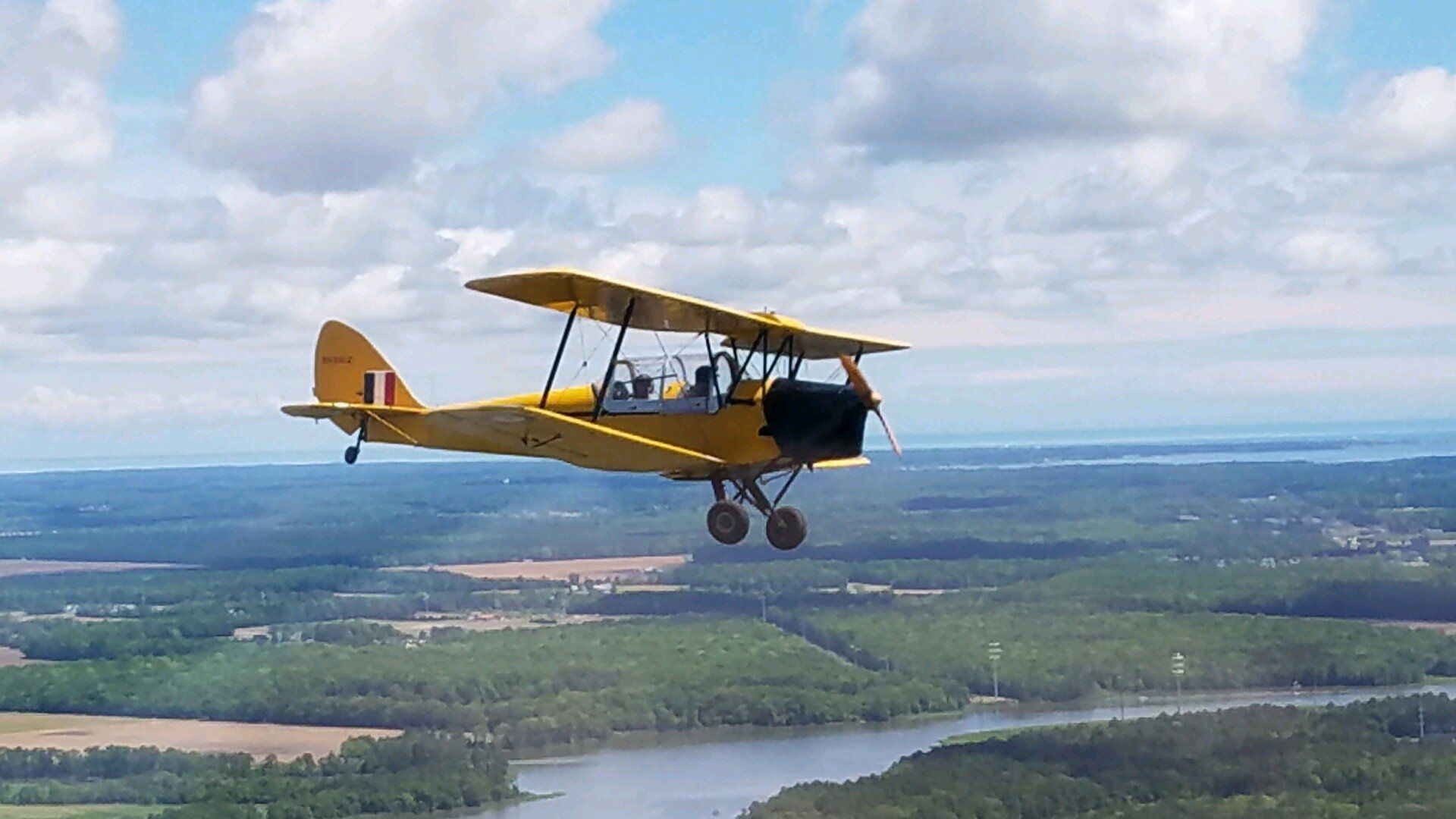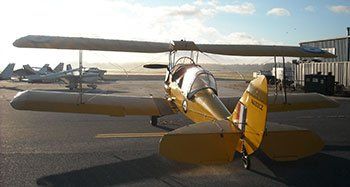DeHavilland Canada DH-82C Tiger Moth
The DH82 Tiger Moth was the last in a long line of biplanes built by the DeHavilland Company Ltd. The Tiger Moth first entered service with the Royal Air Force in 1931 and became the standard elementary trainer for the next two decades. The DeHavilland DH-82C is a direct successor to the DH-60 Moth and can be considered one of the most popular training aircraft ever built! It was first flown in 1931 and was quickly pressed into RAF and RCAF service where 4,300 aircraft were delivered. An additional 3,000 aircraft were also built in Australia, Canada, and New Zealand.
The RCAF (Royal Canadian Air Force) adopted the type in 1938 and it also became the standard training aircraft at the Canadian elementary flying training schools under the British Commonwealth Training Plan where RAF (Royal Air Force) pilots were being trained.
Canadian production aircraft (DH-82C) differed from the British versions by featuring a two-piece cowling, heated cockpits, and large sliding canopies. There were 1,747 Tiger Moths built in Canada, with the majority being the DH-82C variant. The type was generally well liked by pilots and could be used for aerobatic training, as well as for blind flying instruction.
History of this Aircraft: DeHavilland Canada #C1238 (NX82CZ)
- Manufactured in 1941. Shipped to No. 10 Repair Depot at Calgary, Alberta for assembly. Delivered to stored reserve.
- Issued from storage on December 30, 1941 for use at No. 33 Elementary Flying Training School at Caron, Saskatchewan.
- Placed into storage on June 17, 1942.
- Issued from storage on September 1, 1942 for use by No. 31 Elementary Flying Training School at De Winton, Alberta. Noted as equipped for night flying on that date.
- Assigned to M & C Aviation in Prince Albert, Saskatchewan for overhaul on August 23, 1943.
- Diverted to Mid-West Aircraft in Winnepeg on November 1, 1943, with overhaul being completed by December 24, 1943.
- To storage with No. 2 Training Command when completed. Issued from storage on February 3, 1944.
- Pending disposal from July 5, 1944. Transferred to No. 2 Air Command on December 1, 1944, while still pending disposal. Stored at No. 26 Elementary Flying Training School at Neepawa, Manitoba, where it was noted with having 1,201 hours total time, 217:10 hours since overhaul.
- Last military date: July 28, 1945 - Struck off to War Assets Corporation for disposal.
- Transferred from War Assets Corporation to Royal Canadian Flying Club Association, then to the Civil Register as CF-CLH in 1946.
Owned for many years by Dr. John Burson, he donated NX82CZ to the Delaware Aviation Museum Foundation this past October.
Aircraft Specifications
Manufacturer: DeHavilland Canada
Crew/Passengers: Two
Powerplant: One 145 h.p. Gipsy Major or one 160 h.p. Menasco Pirate in-line piston engine.
Dimensions:
Span: 29 ft, 4 in (8.94 m)
Length: 23 ft, 11 in (7.24 m)
Height: 8 ft, 9.5 in (2.68 m)
Wing Area: 239 sq ft (22.20 sq m)
Weight:
Empty: 1,115 lb (506 kg)
Maximum Take-Off Weight: 1,825 lb (813 kg)
Performance:
Maximum Speed: 108 mph (175 kph)
Cruising Speed: 93 mph (150 kph)
Service Ceiling: 13,600 ft (4,145 m)
Range: 302 mi (486 km)





